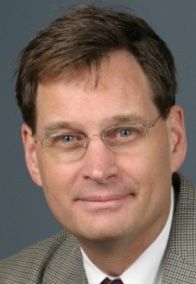Thoughts From Engineers: Water 4.0: Time to Consider an Alternative Paradigm

Our present-day style of managing water hasn’t strayed much from the centralized approach employed by the Romans some 2,000 years ago. This was fine when cities first began to modernize, but the 21st century requires something different. This is the conclusion reached by David Sedlak in his book, Water 4.0: The Past, Present, and Future of the World’s Most Vital Resource, following an exhaustively researched and riveting history of humankind’s relationship with and management of water.
Roman Water Works
Glossy promotional pictures of Rome tend to focus on the towering arches, fountains and viaducts when illustrating the brilliance of Roman engineers. But as Sedlak points out, the system perfected by the Romans through the course of 300 years or so was even more sophisticated than most imagine.
Most of the necessary infrastructure needed to transport huge quantities of water up to 50 miles outside the city was underground. This network of aqueducts, consisting of nearly 250 miles of channels, brought water to elaborate public fountains in the city-center and to the homes of the wealthy, where it was used for a variety of purposes.
There was a network of canals, much like today’s sewer system, to remove wastewater from the inner city. Named the Cloaca Maxima, the system also was designed with settling basins to remove larger solids. The Romans came up with ways to prioritize water use during times of drought as well as to distinguish and assign appropriate uses for potable water and water of inferior quality. A system this elaborate would not appear again until cities entered the modern age.
Challenges of Growth and Industrialization
Sedlak traces with fascinating detail the miserable living conditions of the 19th century that led to the earliest versions of today’s water systems. Although early industrialized cities learned to build networks of pipes to move spring water into the city, populations continued to grow, increasing the problem of waste. Fecal matter inevitably contaminated clean water supplies, which led to water-borne diseases such as cholera and typhoid fever.
Sedlak describes this period in history, “the bucket era,” as a time when cities relied on primitive methods to remove human waste, often referred to as “night soil.” It soon became clear that manual removal wouldn’t be enough to keep drinking supplies clean. Larger cities such as Paris and London dumped wastewater into the major rivers running through the cities and experimented with moving waste to “sewage farms” along the riverbanks for crops. None of these methods were long-term solutions, but certain insights into the key microbial activity behind water purification were beginning to be understood.
The Marvels of Water Filtration
Although adding chlorine to the water supply didn’t become routine until 1902, water-filtration methods conceived in the late 19th century to rid water of pathogens marked a milestone in water purification, and the basic methodology remains largely unchanged today. Sedlak refers to the system of water-treatment plants that came into being following the 19th century crises in drinking water as Water 2.0.
Toxic Outputs of the Modern Age
Water management 3.0, in the form of the Clean Water Act and advanced sewage treatment, evolved in response to the obvious contamination of the nation’s waterways. Discovering that microbial activity was the key to breaking down organic matter led to the technology behind the first wastewater treatment plants coming into being in the late 19th century. By 1940, nearly half the country’s raw sewage was being treated before discharge into a nearby waterway, but this was only a portion of the problem.
The Clean Water Act was passed in response to other sources of contamination such as industrial wastes and synthetic chemicals. The technology exists to retrofit older systems to address these issues, but this process often is cost-prohibitive and isn’t always reliable. Sedlak uses the obvious shortcomings of relying on a built infrastructure to argue for a new water-management paradigm: Water 4.0.
Opportunities for Reform
In the final chapters of the book, Sedlak outlines the limitations inherent in our existing infrastructure and water-treatment systems. Cities have grown up around a centralized infrastructure that imports, treats and distributes water.
Taking advantage of technologies and methods that help reuse water is an idea that still needs to gain traction, but Sedlak says it’s a critical step. Sedlak envisions Water 4.0 as a “hybrid” system that incorporates centralized and decentralized components. He advocates the use of methods that encourage water infiltration through rain gardens and permeable surfaces.
Technology already exists to retrofit single-family septic systems for some level of wastewater treatment, which would allow water to be reused for limited purposes such as lawn care. Other projects to collect and reuse stormwater runoff are gaining traction.
As Earth’s population grows, and climate change and other issues loom large, Sedlak makes an excellent argument for a more-thoughtful approach to water supply, treatment and management. We have made some inroads into this area, but it would be wise to proactively tackle these issues before we find ourselves in a crisis.
About Chris Maeder
Chris Maeder, P.E., M.S., CFM, is engineering director at CivilGEO Inc.; email: [email protected].


